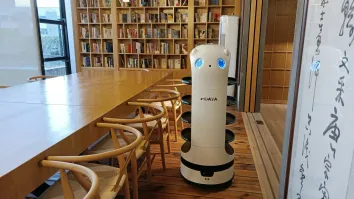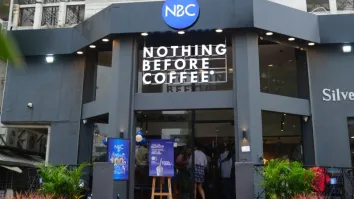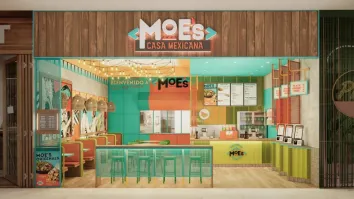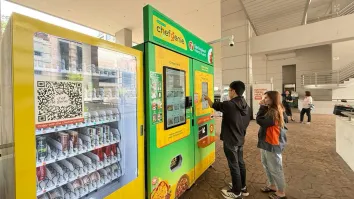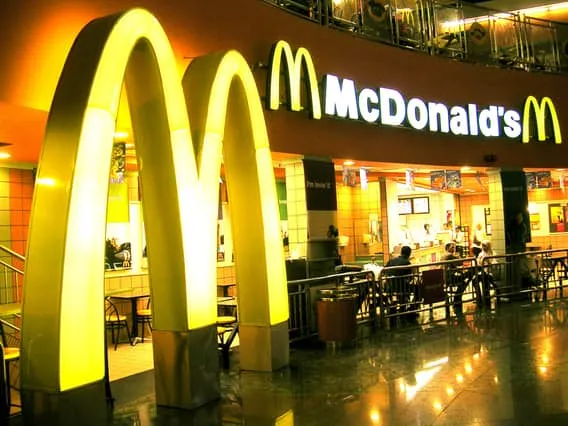
Restaurant chains are facing new conflicting demands from consumers, says research
According to a nine-country survey and more than 60 executive interviews.
Restaurant chains and their suppliers across the world are facing complex, often-conflicting demands from today's ever-more health- and technology-conscious consumers who are also, in many cases, more value-conscious than in recent times. At the same time, though, opportunities await those in the industry who can uncover international growth opportunities, focus on the right technology and maximize supply chains to help them profit from such trends today as more "on-the-go" dining and a growing demand for sustainable ingredients and supply practices. That's according to a new study, "Feeding the Global Consumer," from AlixPartners, the global business-advisory firm.
The report includes a survey of 4,600 diners from nine industrialized countries -- Brazil, China, France, Germany, Italy, Japan, South Korea, the United Kingdom and the United States (where 515 diners were surveyed). In addition, AlixPartners canvassed more than 60 C-level executives from more than 40 different restaurant concepts based in the US with combined 2015 revenues in excess of $90 billion to get their thoughts about international restaurant development as well as global consumer issues.
Dining-out Frequency
The report finds that consumer intentions to dine-out in the next 12 months appear to be relatively high across all countries surveyed. For instance, 47% of diners in China and 40% of those in Brazil said they plan to dine out more often than in the previous 12 months. By comparison, only 15% of American surveyed said that, the lowest percentage of the nine countries. The survey also found that the restaurant segments internationally most likely to gain traffic in the next 12 months are fast casual (with 2.4 expected visits per month per diner in the next 12 months, vs. 2.3 in the prior 12), casual dining (2.3, vs. 2.2) and fine dining (1.3, vs. 1.1), as diners around the world appear to want to "trade up" from fast-food restaurants and meals from convenience stores and grocery stores.
Meanwhile, the survey results for just the U.S. show Americans estimate that visits to fast-food establishments for any type of meal will fall 13% in the next 12 months. Fueling that decline may be a reduction in breakfast occasions, as only 28% of US consumers said they favor fast food for breakfast, a traditional stronghold for that sector, while the remaining 72% said they prefer breakfast from full-service restaurants, fast-casual restaurants, grocery stores or convenience stores.
Per-meal Spending
Like the outlook for dining frequency, the outlook for per-meal spending in the survey is a mixed bag. Of note, the survey reveals what appears to be a barbell-like effect taking hold in dining today across the world. When asked to estimate their average spending per meal per person in in the next 12 months vs. the prior 12, the only increases were at the low end and the higher end of the spending spectrum -- $5-and-under meals and $30.01-$50 meals.
One big exception in terms of spending in the year ahead could be China. According to the survey, 56% of diners there expect to spend more per meal in the year ahead than in the preceding 12 months. That compares with 20% of Americans who said they plan to spend more -- and 24% who said they plan to spend less.
Sustainability / Health & Wellness
Sustainability was a popular topic around the world in the survey. For instance, 53% of diners in China said their choice of restaurants was influenced by sustainable and humane food ingredients and the same percentage said that about sustainable supply practices. In Brazil, the comparable numbers were an also-high 49% and 43%, respectively, while in South Korea, they were 43% and 39%. Interestingly, despite a strong sustainability and health-and-wellness movement in America, the numbers in the U.S. were among the lowest of the nine countries: 34% and 33%, respectively. This could be, says the study, a peek into some of the perhaps-unexpected challenges that await those with international expansion on their minds or it could be a harbinger of even greater sustainability challenges yet to come in the US -- or both.
Regarding health and wellness -- and of challenges, unexpected or otherwise -- the consumer survey found that attitudes toward salubrious menu options differ widely by country. For instance, 33% of Americans surveyed said "healthy" menu options are either "extremely" or "very" important when choosing where to dine out. By comparison, though, 48% and Chinese and 51% of Italians said that. At the other extreme, just 26% of Britons and 17% of Japanese said such options were that important.
"On-the-go" Dining / Delivery / Technology
Another trend shining through in the survey is consumers' growing interest, around the world, in dining while "on the go." On average, 23% of those surveyed said they plan to increase their frequency of carryout meals over the coming 12 months, with 52% of the Chinese saying that, 39% of the Brazilians and 26% of the Germans. The US, possibly the most saturated place in the world for drive-throughs and in-car multitasking, came in at 15%. Perhaps even more telling was that respondents internationally said that on average they expect that basically one of every four meals (23%) of any kind they eat in the coming 12 months to be either carryout from a restaurant or some other form of a "mobile meal," such as food from convenience stores or grocery stores.
Hand in hand with diners' growing interest in moveable feasting is their growing interest in technology, including what appears to be a strong focus on the ability to control both the ordering and payment processes. When asked to identify the top-three most-important technologies a restaurant today can have, 53% of respondents globally chose online ordering, the No. 1 vote-getter of the options offered. Digital menus (49%) were second and digital loyalty programs (48%) third, with mobile payments (44%) and mobile meal-ordering (42%) rounding out the top five. Among US respondents, the leader was digital loyalty programs, at 56%, followed by online ordering (53%) and digital menus (52%).
In addition to seeking value through loyalty programs, diners in the survey also showed that they're technologically savvy when it comes to seeking out pure deals on their meals. When asked how effective online discount services are at influencing their dining-out decisions, 20% said such services are "extremely" influential and 49% said "somewhat" influential. In addition, an average of 52% said they plan to look for more discounts in the year ahead; and notably, those in the two largest economies in the survey, the US and China, came in at well above that average, at 62% and 71%, respectively.
Eric Dzwonczyk, managing director at AlixPartners and co-head of the firm's restaurant and foodservice practice, said, "It's clear that technology is changing the way consumers interact with restaurants. Increasingly, it's critical for restaurant companies to provide online ordering, digital menus and the ability to control how and when the check gets paid. Digital loyalty programs can be tricky to manage profitably, but customers continue to look for deals. The prudent allocation of capital and resources to technology-based business initiatives will have a major impact on who wins and loses with consumers in both the US and globally."
Chains vs. Independents
Diners' attitudes toward restaurant chains in the survey differed markedly by region. Globally, only 19% of respondents said they prefer dining-out at chains vs. independent establishments; and only 14% of Americans and 9-11% of Europeans surveyed said they preferred chains. However, 41% of the South Koreans, 39% of the Chinese and 23% of the Japanese said they preferred chains over independents. Meanwhile, among American respondents, 53% said chains are "much" or "somewhat" better than independents at the use of technology, and 43% saying that about chains prices.
Kurt Schnaubelt, managing director at AlixPartners and co-head of the firm's restaurant and foodservice practice, said, "Value is never out of vogue and customers are more demanding than ever. They require excellent food quality, friendly and fast service, and reasonable prices -- preferably with a discount or deal. In addition, consumers in many regions of the world prefer independents over chains, further ramping up the competitive pressures. Only with the right mix of attention to pricing, cost control and service will chains be able to maintain profit margins."


